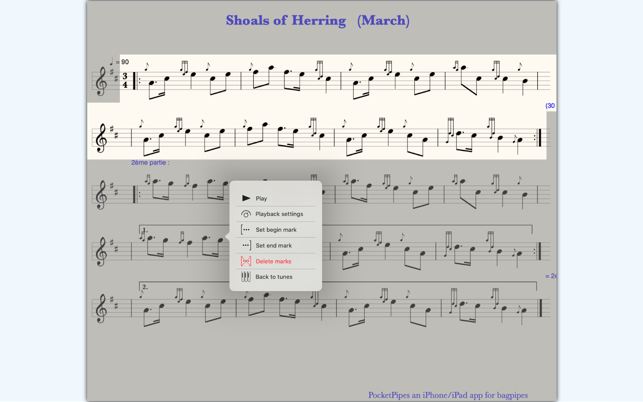

- #Bww files bagpipe player how to#
- #Bww files bagpipe player full#
- #Bww files bagpipe player software#
- #Bww files bagpipe player code#
#Bww files bagpipe player software#
One of the most popular pieces of software for rendering abc is abcm2ps, and many editors use this as a back end to their main graphical interface. These usually render the sheet music as you go along and then allow you to print the score. Of course, there are many ways of getting sheet music out of an ABC file, and if you decide to use ABC to typeset all your bagpipe music, I would highly advise installing an ABC editor.

Viola, you now have a pdf, midi file, and jpg available of your new sheet music.
#Bww files bagpipe player code#
Go to this website and paste your new code into that little box and click submit. For our example tune you press “tune up” 8 times and the ABC code will now read “K:D”. If you’re transcribing something like an Irish tune, you’ll frequently find one part fits really well on the pipes, but the other doesn’t, so you’re left with transposing only one part, or one part and the ending phrase. Of course, if you’re an adventurous type and like to mess with alternate fingerings for accidentals, by all means. If you end up in “K:G” hope there are no Cs because ours is a sharp, but G major has a C natural. If you end up in “K:A”, hope there are no Gs in your tune as A major denotes an additional G sharp whereas our Gs are natural. Other keys you can shoot for are A major and G major, though they have their caveats. So press up or down until most of the notes, if not all, are those notes for the bagpipe. Capitalization counts!!! Hopefully, you end up in the key of D, shown as “K:D” (D major) in the ABC code. The range of the bagpipe in ABC notation is GABcdefga. Paste the code into the window on this website and click “tune up” or “tune down” to change the key the tune is in. Copy the ABC code in the box found on your webpage. For this particular example tune, it is no where near the range of the bagpipe scale as it is currently notated, so we proceed to step 4, otherwise if it already fits go to step 5.Ĥ. Click through a few links until you come across one that has abc notated code for the tune/song you’re looking for, e.g. Google “_insert_tune/song_name_here_ abc notation”, e.g. With a little bit of help from some nifty software, you can have it done in 5 minutes (or more, sometimes)!ġ. Gone are the days of listening to some mp3 or YouTube video of the tune and working it out by ear sure to be soured by wrong notes and wasted hours.
#Bww files bagpipe player how to#
If deciding to purchase the CDROM version, please note that the CDROM has to be in the drive when initiating the software.No recordings here guys, just a post about an easy way to see if a non-bagpipe tune fits on the pipes, and how to get sheet music for it without working very hard at it.

Both Importing of BMW format tunes and output to wave file options are available form the File menu. However an integrated online Help facility is available to the user if and when required. There is also no need for operational or tutorial manuals, as PiobMaster is so simple to use. To view licensing costs and agreements for bands and individuals click here
#Bww files bagpipe player full#
An integrated sound toolbar containing buttons for playing, stopping, pausing, forwarding, rewinding and setting the tempo, give full control to the user for sound playback. The composer then has the option of hearing their composition being played back through their PC's own sound system. Notes can be "Grouped, "Dotted","Cut" or "Tied" by simply selecting them and pressing the appropriate button. The user then has the ability to "drag and drop", notes, doublings and embellishments from their palettes onto the stave. PiobMaster 2.3, pronounced "PEEBMASTER", Piob in Gaelic is "bagpipe", is a WYSIWYG application, where the composer initially defines the music structure with a simple user interface.


 0 kommentar(er)
0 kommentar(er)
